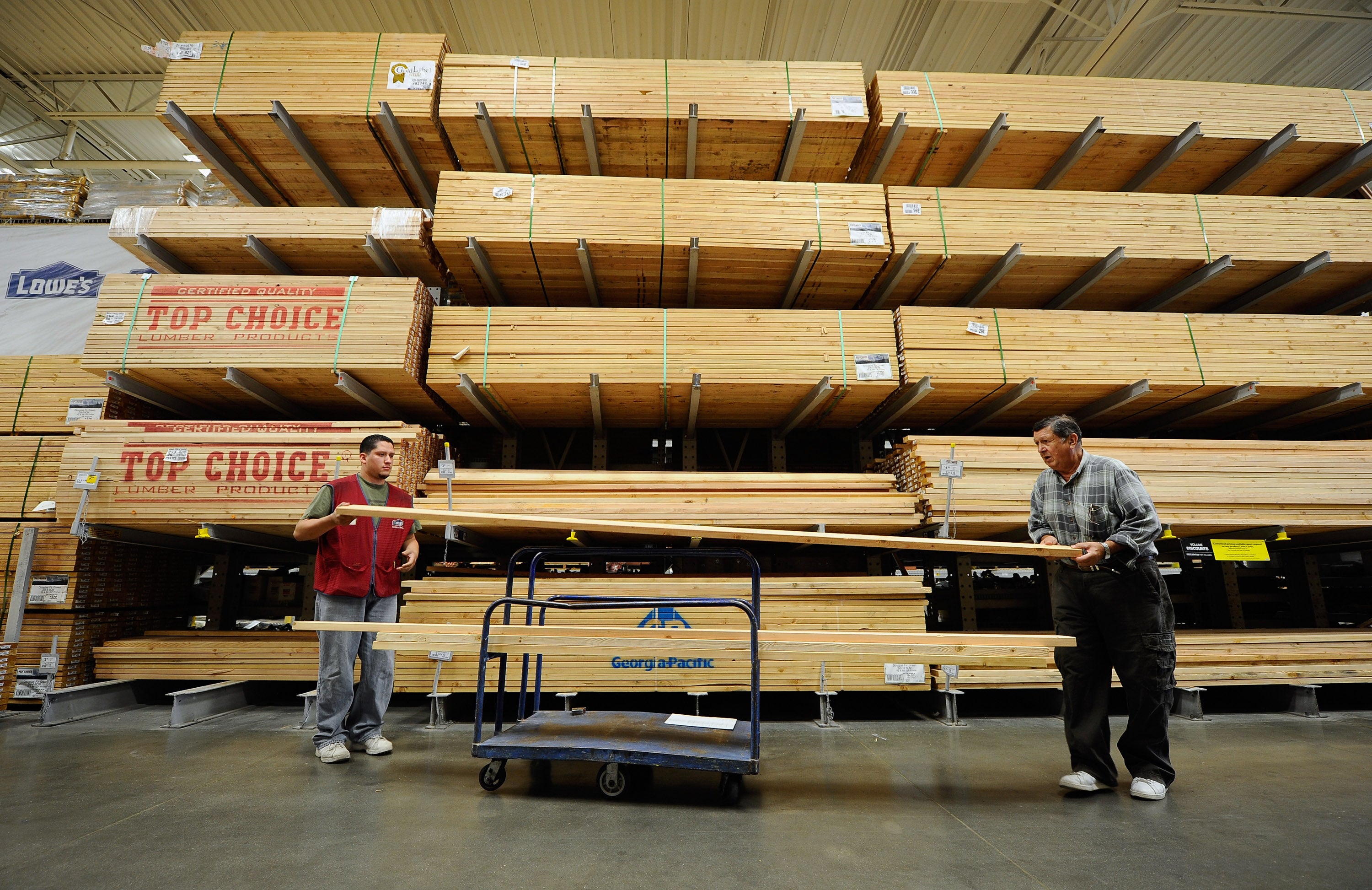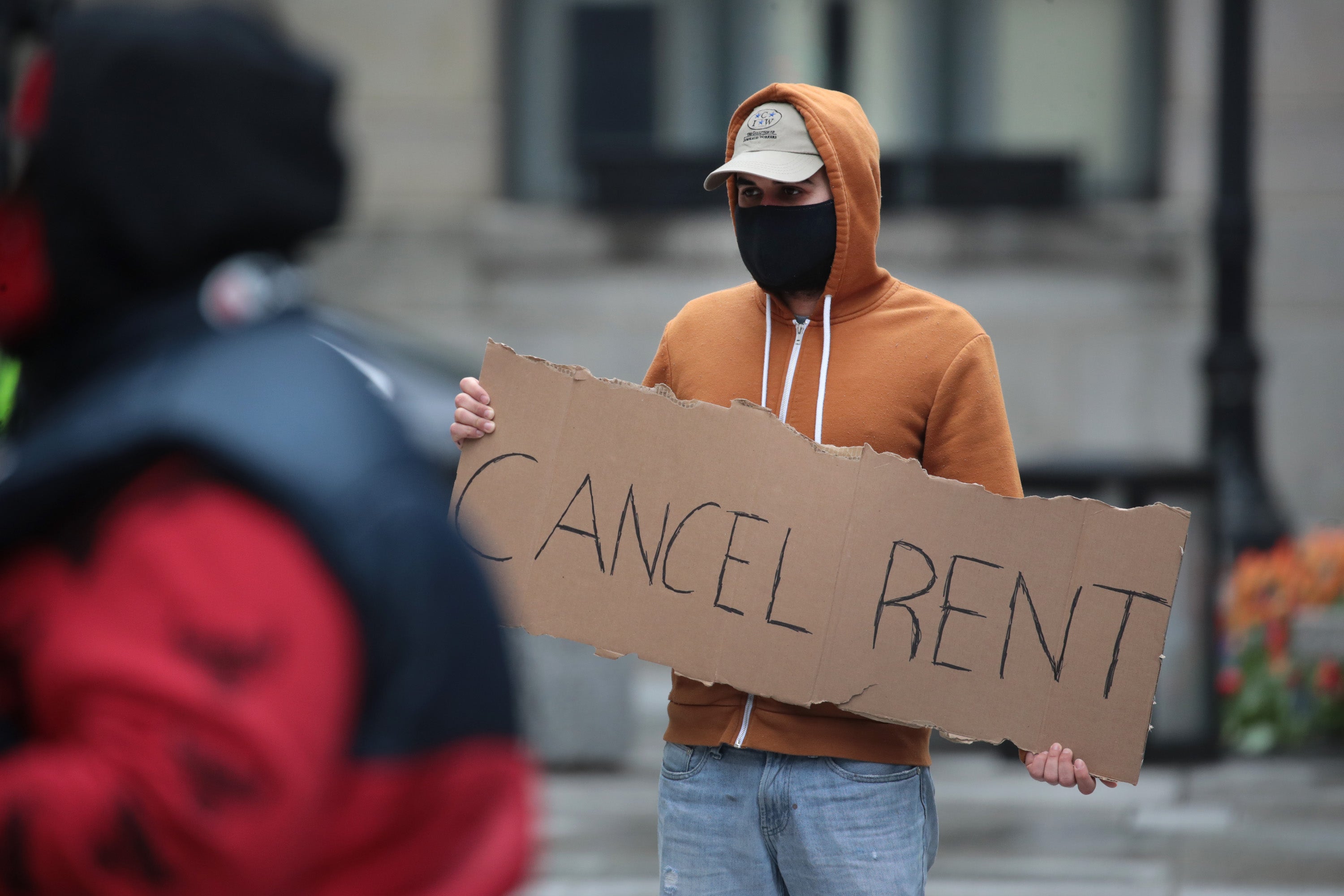Covid DIY-ers and millennial homebuyers are ‘fuelling the price of lumber in the US’
With the pandemic driving many out of expensive cities, and a previously prohibited new generation hitting the housing market, prices are more than doubling, writes Alice Hutton

A chronic shortage of lumber in the US that has sent prices rocketing may have been worsened by a massive DIY rush during the pandemic and an influx of millennial homebuyers to the market, reports have claimed.
When Covid-19 caused a global shutdown last year, millions of people were confronted with the reality of spending close to 24-hours a day in their home.
And some of them didn’t like what they saw.
It caused an exodus from many expensive, populous cities, like New York, Paris and London, into suburbs with larger homes and access to a garden, causing a spike in property prices and a sharp drop in inventory.
But for those who either didn’t want to, or couldn’t afford to move, it also had another effect: it sparked the rise of the home improver.
Ryan, an engineer in his 30s, spent hundreds of dollars on building a couple of small planters for his balcony in his rented apartment in Boston, Massachusetts.
He told The Independent he was “in shock” when he saw the price of wood in Home Depot but decided to absorb the added cost in order to “make the most out of our second, Covid summer.”
He added: “I was in a much smaller apartment in 2020, with no deck or yard, which was sad because we were inside nearly all the time. We specifically moved to a place with outside space that we could try and turn into a little oasis. I didn’t think that a few planks of wood would cost so much.”
Across the street from where Ryan moved, a stream of dozens of would-be home-buyers in their late 20s to late 30s lined up in their masks to view a two-bed, 1,000-square foot apartment on the market for $675,000.
The owner, who did not want to be named, later reported that it sold in under 48 hours for “significantly over asking-price.”
Last year a larger two-bed property a few doors away on the same street sold for nearly $100,000 less.
The US lumber crisis has no shortage of reported causes, depending on who you speak to.
Those causes include the large tariff war between then President Donald Trump and Canada in 2017; the impact of climate change on Canada, the biggest importer of lumber into North America; devastating wildfires; and a chronic beetle infestation.
Last month a post on Facebook reportedly showing the cost of plywood rocketing from $37.98 a sheet in March 2020 to $95.98 in April this year, went viral falsely accusing President Biden of being the “leftist” architect behind rising prices.
Between 2015 and 2019, lumber in North America cost an average of $381 per 1,000ft, with the average house constructed out of 15,000ft of it.
But as of this year, the price had increased by nearly 200% to $1,104, adding an estimated $24,000-35,000 to the price of a new home, as reported by The Atlantic.
Dick Tarr, co-manager of Lapointe Lumber Company Inc in Maine, told The Independent that the arrival of the pandemic had created “the perfect storm” that has led to “the best year in sales in 40 years” for the company.
Mr Tarr said: “It was building before, but the big catalyst was Covid. It had a really weird effect. It caused a lot of people to decide they didn’t want to live in a big city. They built new places or bought up places up so quick some people don’t even ask for inspections now. And a lot of people that were home and not going on vacations suddenly said ’let’s build a deck or redo the kitchen’. So demand suddenly rocketed. Then, because of the virus, all the mills just shut down. We’ve been struggling to keep up ever since. We can’t source it quick enough. I think a lot of the lumber has doubled at least and some has tripled.”
Wood he used to sell for $10 is now nearly $40 and wood that sold for $25 now goes for $75.
He put the increased prices down to “supply and demand, basic capitalism”.
“You can probably put the blame on some manufacturers”, he said. “They may have taken advantage of it. We as a business can be thoughtful and keep our price low, but before we know it we would be completely out and couldn’t afford to buy more at the raised prices. So everyone is putting prices up, and you can’t find a contractor for months. It’s a snowball going downhill.”
The arrival of the pandemic also coincided with millennials – born between 1981 and 1996, now aged 25-40-years and who suffered from the economic crises in both 2008 and 2020 – reaching peak age to become first time homebuyers, according to CoreLogic.
Last year, after being locked out of the housing market for years by a lack of jobs, rising cost of living, house prices and high student debt, they reportedly released decades of pent up demand and became one of the largest social groups in the housing market, according to Apartment List’s homeownership report.
The millennial homeownership rate reached 47.9% this year, compared to 40% three years ago.
George Rati, a senior economist at Realtor.com told Axios that after years of being cast as “generation rent”, millennials are getting older and using the pandemic as a catalyst for moving into the housing market, with around 30% claiming that the virus pushed them into looking for a home earlier.

With an estimated 43% of first-time millennial homebuyers looking for more than a year and 44% saying they still need more money for a deposit, increasing numbers are also leaving high cost cities like LA and San Francisco for places where the price of living is cheaper, including Texas, Arizona and Colorado.
Mr Rati added: “Looking ahead, millennials will continue to be dominant participants in housing markets.”
Daryl Fairweather, the chief economist at property website Redfin, told Business Insider that the generation had been “unfortunate” to get sandwiched between the two huge crises.
“All the shortages right now are definitely not helping us figure our way out of the hole, but even without those challenges, the hole is humongous,” Mr Fairweather said. “So it’s going to take decades of building lots and lots of homes.”


Join our commenting forum
Join thought-provoking conversations, follow other Independent readers and see their replies
Comments